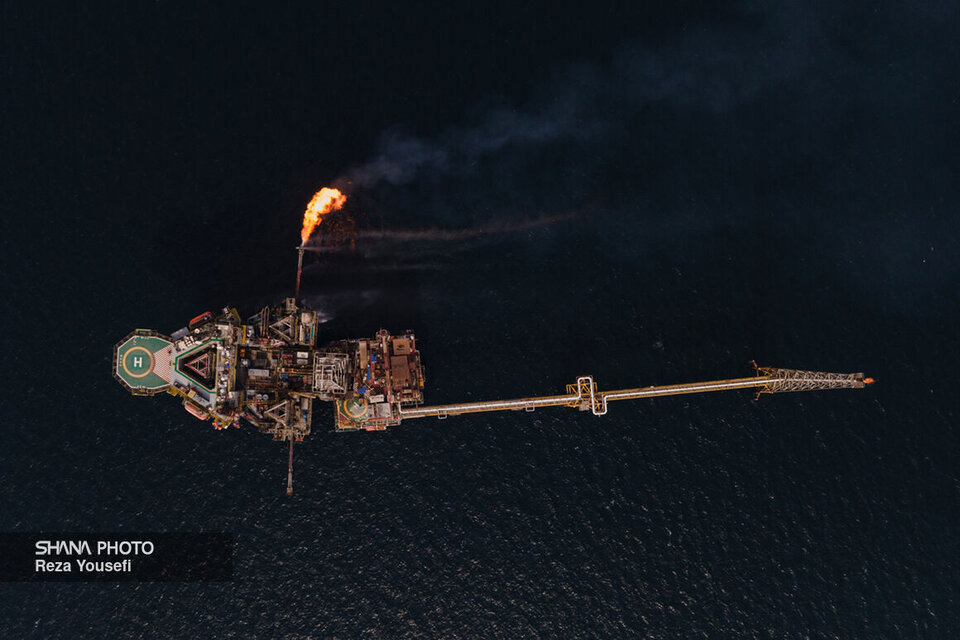As Iran Gas Engineering and Development Company enters its third decade of operation, it has taken significant steps in developing the country’s gas infrastructure. By implementing key projects such as nationwide transmission pipelines, expanding storage capacity, and optimizing energy consumption, the company plays a vital role in ensuring stable gas supply.
The acting head highlighted the remarkable progress of these projects, future plans, and the impact of sanctions on their execution. Despite challenges posed by international restrictions, he stressed that relying on domestic capabilities and advancing local technologies has not only rescued the gas industry from stagnation but also turned it into a competitive field.
Below is the interview by the Shana with Behnam Mirzaei.
What are the most important ongoing projects of Iran Gas Engineering and Development Company?
As the company approaches its 20th anniversary, it has completed major projects, and the collaborative environment remains highly positive. Key projects include the Ninth Cross-Country Pipeline, the second phase of the Sarajeh Storage Facility, and the second phase of the Shourijeh Storage Facility—each playing a crucial role in strengthening Iran’s gas transmission and storage network.
The Ninth Cross-Country Pipeline, spanning 400 kilometers, is being implemented in four 100-kilometer sections from Khorramabad to Kouhdasht. Two sections are 92% complete, while the other two are about 80% finished. Given its importance, my first official visit was to this project, where we addressed financial and supply challenges and devised solutions. This pipeline is critical for balancing the country’s energy network and will significantly reduce gas grid challenges once operational.
Additionally, major projects are underway in transmission lines and compressor stations. One key project is completing the second phase of the Ilam Refinery, scheduled for operation in 2025. Meanwhile, the board of directors recently approved a 400-kilometer pipeline project, part of the 11th and 12th cross-country pipelines, which includes three compressor stations—one already under construction, with the locations of the other two pending strategic decisions.
What is the purpose of these new gas transmission lines?
The 11th pipeline, delayed due to route selection studies, aims to strengthen the national gas network. The Ninth Cross-Country Pipeline, running parallel to the Sixth Pipeline (an export line), is designed to enhance transmission capacity in the Kouhdasht-Khorramabad region.
Another priority is the second Rasht-Ramsar pipeline. Despite execution challenges due to the densely populated northern route, we are focusing on this project after discussions with the deputy oil minister for gas affairs. Initial studies are complete, and we plan to hold a tender within three months, with operations expected to begin soon.
What is the status of the Sarajeh Storage Project, crucial for stable winter gas supply?
The second phase of the Sarajeh Storage Facility in Qom is one of the company’s most important projects. It includes above-ground and underground sections, with the above-ground portion set for completion by late April and the underground section operational by August. This facility plays a key role in balancing the gas network by storing gas during low-demand periods (summer) and injecting it during peak demand (winter), making it a critical energy infrastructure asset.
How is the second phase of the Shourijeh Gas Storage Project progressing?
The second phase of Shourijeh in Khangiran is being executed under a BOT (Build-Operate-Transfer) model with private sector participation (MAPNA Group). The main challenge is securing investor funding, which has slowed progress. We are working with the National Development Fund and the National Iranian Gas Company to resolve this. Once funding is secured, the project will proceed as planned, significantly boosting Iran’s gas storage capacity.
What is Iran Gas Engineering and Development Company’s focus in 1404?
The company aims to operationalize projects as soon as possible, accelerating tenders and contractor selection. Key projects include the 10th Cross-Country Pipeline, already underway in two sections, and the Nehbandan-Sarbisheh pipeline, which will expand the gas network in the southeast.
Compressor stations are also a priority, with their placement based on hydraulic calculations and directives from the National Iranian Gas Company. Additionally, non-transmission projects, such as optimizing compressor stations via ORC and SRC methods, are underway. We have proposed using turbine exhaust for power generation, which can either supply the stations or feed into the grid.
How have sanctions impacted projects, and what measures are being taken to rely on domestic capabilities?
Sanctions have undoubtedly affected project execution but have also pushed domestic industries to enhance their capabilities. For example, while turbo-compressors were initially imported, anticipating sanctions led to local production, boosting the expertise of companies like MAPNA and Oil Turbo Compressor (OTC).
Similarly, while steel sheets and billets were once imported, X70-grade billets are now produced domestically. As the client, we maintain strict quality control and close collaboration with local manufacturers. Though some domestic producers still need quality improvements, bilateral cooperation has enabled large-scale projects, such as manufacturing oversized valves.
Although sanctions have increased costs and delays, they have forced greater reliance on domestic capacity. For instance, compressor stations are now 90% locally built, demonstrating the shift toward domestic solutions. While local manufacturers face financial and quality challenges, sustained cooperation has ensured the completion of major projects. Moving forward, we aim to further support domestic producers to enhance their competitiveness against foreign counterparts.


Your Comment